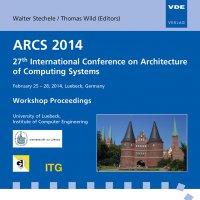Hybrid parallelization of a seeded region growing segmentation of brain images for a GPU cluster
Conference: ARCS 2014 - 27th International Conference on Architecture of Computing Systems
02/25/2014 - 02/28/2014 at Luebeck, Deutschland
Proceedings: ARCS 2014
Pages: 8Language: englishTyp: PDF
Personal VDE Members are entitled to a 10% discount on this title
Authors:
Westhoff, Anna M. (Simulation Lab Neuroscience, Bernstein Facility for Simulation and Database Technology, Institute for Advanced Simulation, Jülich Aachen Research Alliance, Forschungszentrum Juelich, Juelich, Germany)
Abstract:
The introduction of novel imaging technologies always carries new challenges regarding the processing of the captured images. Polarized Light Imaging (PLI) is such a new technique. It enables the mapping of single nerve fibers in postmortem human brains in unprecedented detail. Due to the very high resolution at sub-millimeter scale, an immense amount of image data has to be reconstructed three-dimensionally before it can be analyzed. Some of the steps in the reconstruction pipeline require a previous segmentation of the large images. This task of image processing creates black-and-white masks indicating the object and background pixels of the original images. It has turned out that a seeded region growing approach achieves segmentation masks of the desired quality. To be able to process the immense number of images acquired with PLI, the region growing has to be parallelized for a supercomputer. However, the choice of the seeds has to be automated in order to enable a parallel execution. A hybrid parallelization has been applied to the automated seeded region growing to exploit the architecture of a GPU cluster. The hybridity consists of an MPI parallelization and the execution of some well-chosen, data-parallel subtasks on GPUs. This approach achieves a linear speedup behavior so that the runtime can be reduced to a reasonable amount.


